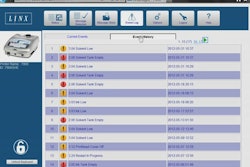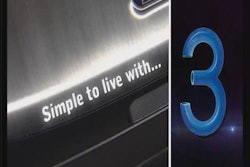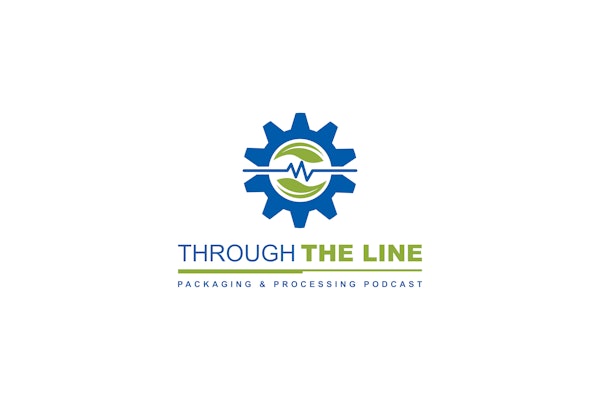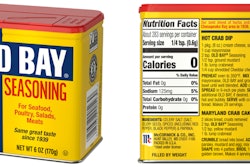
There’s no packaging material that holds up a mirror to the multifaceted, splintered era of sustainability better than paper, and no member of that category does it better than recycled-content corrugated boxes. Well before sustainability gained its prominence, the environmental- friendliness of corrugated boxes was widely acknowledged, given that they are derived from a renewable resource and their strength-to-weight ratio provides product protection along with cost-savings and efficiencies throughout the supply-chain. While no type of packaging is perfect, corrugated boxes, comparatively, are darned close; therefore, the further pursuit of perfection should be done judiciously, lest the end results prove worse than the starting circumstances.
Recycling is a pillar of sustainability and corrugated boxes, being made of paper, indeed, are recyclable. But that doesn’t dismiss considerations regarding what’s to be done with that recycled material. There are a variety of paper products with end uses that justify a recycled content—all the way up to 100%. Maintaining an end-use focus, what are the limitations for incorporating recycled corrugated into the manufacture of new corrugated boxes? The question divides into: should corrugated boxes contain recycled content at all; and, if so, what percent of recycled content is practical?
Industry practices answer the first part of the above question because corrugated boxes that contain no recycled content at all are rare, if not nonexistent. When corrugated boxes are said to consist of 100% of virgin fiber, it’s typically in reference to the facings of the board. The corrugated medium in such a box typically has recycled content. At the opposite end of the continuum, there are suppliers of corrugated boxes that compete on the basis of the percent of recycled content, the implied message being that the higher that percent, the higher the sustainability credentials. That correlation is not true; moreover, end-users of corrugated boxes need objective criteria for making choices about recycled content. Whether the comparisons are on function or on aesthetics, differences between virgin and recycled fibers trace to fiber lengths.
Virgin fibers are longer and the longest virgin fibers are produced by chemical pulping, whereby chemicals are used to “cook” the fibers out of wood (in contrast to mechanical pulping that grinds the wood). Longer fibers interweave better, imparting to the paper higher strength and better appearance. It makes sense for some end-users of corrugated boxes to opt for the highest content of virgin fiber attainable. Manufacturers of certain high-value consumer electronics are examples because the boxes not only must protect their expensive contents but also must serve as the primary package and “salesperson.” The use of recycled-content corrugated boxes that underperform the aforementioned functions is the opposite of sustainability; for, when products aren’t sold because the packaging didn’t adequately protect or didn’t adequately persuade, all of the resources and energies consumed in the sourcing, manufacturing, and distribution of those products are squandered.
That recycled fibers can’t completely duplicate the functional and aesthetic properties of virgin fibers should be accepted as a given; nonetheless, there are applications that lend themselves to recycled-content corrugated boxes. Some products are durable enough to require less than maximum protection from boxes. Similarly, some primary packaging, such as metal cans, relieves some compression strength requirements that the boxes otherwise would have to shoulder. If, additionally, the product is taken out of the box and the “selling” is done by primary/secondary packaging, a stronger nod can be given to the use of recycled-content boxes.
Then again, not all of the potential problems with recycled-content boxes are exterior to end-users’ facilities. In-house printing and labeling, for example, can be adversely affected if the recycled content is too great. Inks can fail to penetrate due to contaminants. This happens rather frequently, since sorting and decontaminating are expenses that some paper-makers choose to avoid. A different though related problem is poor print registration; in other words, the lesser ability of shorter fibers to interweave results in paper that has larger spaces between the fibers, permitting inks to “run.” Returning the discussion to contaminates, labels (as well as tapes) might not properly adhere. On another note, all (untreated) paper fibers are hygroscopic, with shorter fibers being more so; hence, the more the recycled content in a box the less resistant it is to moisture. That means that humidity-controlled storage conditions suitable for virgin fiber boxes might not be suitable for recycled-content boxes.
From a sustainability perspective, there is an inherent appeal to reducing the use of virgin feedstock. But sustainability is best evaluated through a holistic lens—whether that’s Life-Cycle Assessment, Cradle-to-Grave Analysis, or something similar. Conducting those evaluations for reliable results is a formidable undertaking under the best of circumstances; however, the degree of difficulty is notched up when it comes to recycled fibers and the corrugated boxes that incorporate them. That’s because a box’s recycled content is citable on a percent basis but not on a composition basis. A box can be said to contain a specified percent of recycled content, but the exact makeup of that content is—for all intents and purposes—unknowable.
What is known is that each time fibers are recycled they become shorter and weaker; furthermore, there comes a time when repeatedly-recycled fibers reduce to sludge in the paper-making process. And even if a given box does not contain fibers that have been recycled beyond usefulness, there’s no way of ascertaining what percent of the fibers have been recycled once, twice, thrice, etc. Efforts, therefore, to tally all of the resources and energies associated with a recycled-content box might be too fraught with assumptions to be reliable measures of sustainability.
And regarding procurement, specifying a given percent of recycled content doesn’t guarantee consistency of the composition of that content, meaning that it doesn’t guarantee consistency of quality and performance. Not only do boxes differ across suppliers, they differ from the same supplier. That lack of standardization makes the use of standardized tests, such as Mullen and Edge-Crush Test, less reliable, in addition to imposing difficulties for organizations that certify corrugated boxes.
The future of recycled fiber is assured because of its association with sustainability. The future of virgin also is assured because (in addition to foregoing comments) the supply of recycled is not large enough to completely supplant virgin. In conclusion, it’s the end-users’ responsibility to make decisions about virgin vs. recycled. In so doing, end-users need a good understanding of the differences between the two because those differences never should be papered over.
Sterling Anthony is a consultant, specializing in the strategic use of marketing, logistics, and packaging. His contact information is: 100 Renaissance Center- P.O. Box 43176; Detroit, MI 48243; 313-531-1875 office; 313-531-1972 fax; [email protected]; www.pkgconsultant.com

























